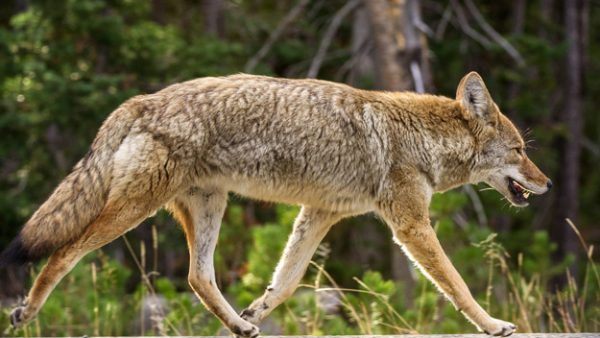Residents of West Hollywood’s Westside will have an opportunity next week to learn how to get along with coyotes, the transients who aren’t homeless who have been moving into the neighborhood for more than a year now.

The coyote management community meeting will take place at 6:30 p.m. on Feb. 6 at the Community Meeting Room at West Hollywood Library. The library is located at 625 N. San Vicente Blvd., south of Santa Monica.
Attending the meeting, and taking questions and comments and listening to concerns from Westside residents, will be representatives from Los Angeles County Department of Agriculture, the California Department of Fish and Wildlife, L.. County Animal Control and West Hollywood’s Code Compliance office.
Residents have reported seeing coyotes on streets such as Rosewood, Huntley, Dorrington, Almont and Ashcroft, to name a few. They are especially concerned that coyotes might attack small dogs and cats. While some people have expressed fear that they might be attacked, such attacks are said to be rare, with only one human fatality reported in California’s history.
One issue appears to be empty lots or unoccupied buildings where coyotes can create dens. Residents also have been warned not to leave any sort of food outside their homes.
A memo prepared by City Hall in 2017 states that “coyotes fill a unique niche in the ecology of Southern California. Hikers, outdoors enthusiasts, and those who live near mountains and foothills have likely encountered the small, thin dog-like creatures at least once. However, unlike bobcats, pumas, and other carnivores, coyotes are extremely well-suited to living in urban environments. Coyotes can scavenge and survive on almost any food source, including garbage, fallen fruit, small mammals and reptiles, and, sadly, domestic pets.
“Because of coyotes’ versatility, they have found an ecologic foothold throughout many parts of the Los Angeles area. In West Hollywood, coyotes have been known to wander down from the Hollywood Hills, setting up dens in parks, alleys, and other abandoned locations. They are drawn by easy access to both water and food. As coyotes acclimate to the presence of humans, they can become aggressive and dangerous. While attacks on humans are rare – with only one fatality on record in California’s history – attacks on pets do occur, although with an indeterminate frequency.
The memo notes that relocating trapped coyotes is illegal under California state law and that trapping and killing them “has faced serious opposition from animal rights activists and biologists alike.”
As an alternative, it recommends the city follow steps taken by other cities that have implement a multi-tiered coyote management plan similar to one recommended by the Humane Society, a copy of which can be found online. https://www.humanesociety.org/sites/default/files/docs/coyote-management-coexistence-plan.pdf

Four agencies have been summoned to hold the hands of the residents? How about responsible adults educating themselves.
The east side has been living with them for years. If one gets up early in the morning, you can see them foraging on our streets from what I’ve been told. I am not an early riser LOL.
Good websites to counter the propaganda from HSUS and PETA folks who hope you will contininue to feed your pets to the coyotes are California’s own agriculture Department webpage, http://ipm.ucanr.edu/PMG/PESTNOTES/pn74135.html , and of course one of the very best, http://www.projectcoyotelies.com
No climate change?
YES! Coyote habitat loss and anthropogenic climate change have played a significant role in creating the problem we are now facing! A consequence of environmental destruction is not only extinction of many species but, a proliferation of dangerous pests that result from the adverse selective pressures.